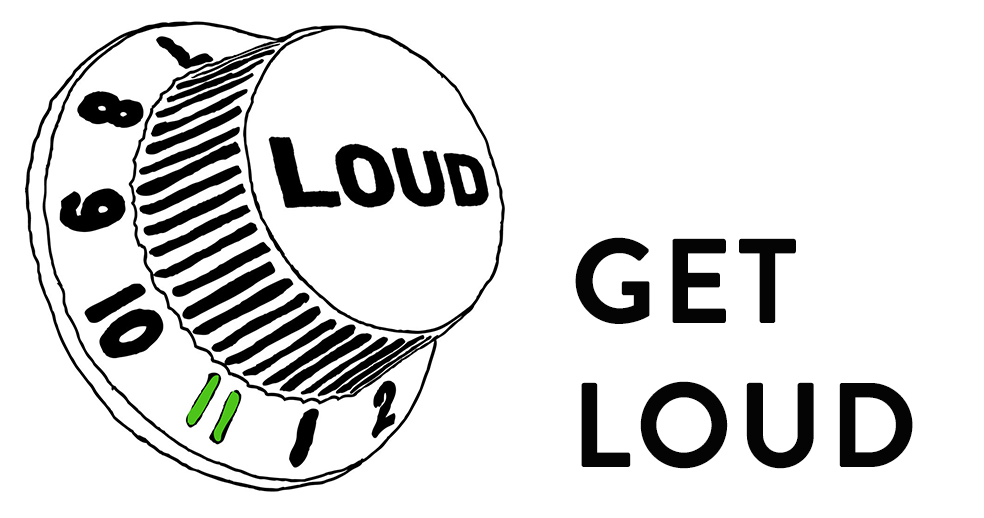
By Kristen Gleeson-Prata, with Lindsay Artkop and JJ Jones
Knowing when and where to play loudly may set the good musician apart from the great one, but we can all agree that it’s the most fun way to play! Here are a few simple changes that can increase your drumming volume.
1. Hit in the middle of the head.
This may seem like a given, but it wasn’t until my teacher pointed it out to me that it really sunk in and made a difference in my playing. By mindfully hitting hard in the middle of the head, you allow the drum to speak to its full volume and potential. I find this to be true especially with toms.
2. Play rimshots.
There are many different ways to play the snare drum, from ghost notes to rimshots. Rimshots give a satisfying “crack” that can deepen the backbeat and make the snare drum sound and feel so good. The rimshot involves two points of contact between the stick and the drum. The bead (tip) strikes the center of the head as usual at the same exact moment that the shaft strikes the rim. In order to develop the muscle memory that will create comfortable and consistent rimshots, begin by mindfully and slowly placing the stick in the correct place on the drum, and then slowly bringing the stick up into the air and back down into the same exact spot. It’s a process that may take some time, but will add a lot of power and volume to your playing.
3. Play heel-up on the kick drum pedal.
There are two basic bass drum techniques: “heel-down” and “heel-up”. The heel-down method is much lighter and is generally used in genres like jazz and other light playing styles. It involves keeping your heel on the footboard while just the ball of your foot lifts up and down to create the bass drum striking motion. If you want to up your impact and play louder, the heel-up technique is the better way to go. This method uses the force and weight of your entire leg to strike the bass drum. Keeping your heel lifted and the ball of your foot on the pedal, you raise your leg from the hip and push down on the bass drum pedal. You can bury your beater into the head if you want a dead sound, or if you want a more open tone, slide your foot back immediately after you strike the drum to allow it to resonate fully. With both of these techniques, never lift your entire foot off of the pedal or you’ll lose control.
4. Use larger sticks.
The larger the sticks, the heavier they are, and the more sound they’ll produce. Most drummers are picky and particular about the exact kind and size of stick they use, but it’s good to experiment and change things up once in awhile. Choosing a larger (whether it be thicker or longer, or both) stick will automatically up your power and volume, but make sure you’re comfortable with the size. If you can’t use them comfortably, you won’t be able to produce a good tone.
5. Use a combination of your wrist and arm.
It is common to be taught to play only with your wrist, especially when you first start learning. You should always, always, always use your wrists to play, but adding in a bit of arm movement allows more wind-up and therefore more force in hitting the drum.
Kristen, Lindsay, and JJ are the new tech editors at Tom Tom! All are pro touring and session drummers, and all teach private lessons.
Kristen: kgpmusic.com
Lindsay: lindsayartkop.com

